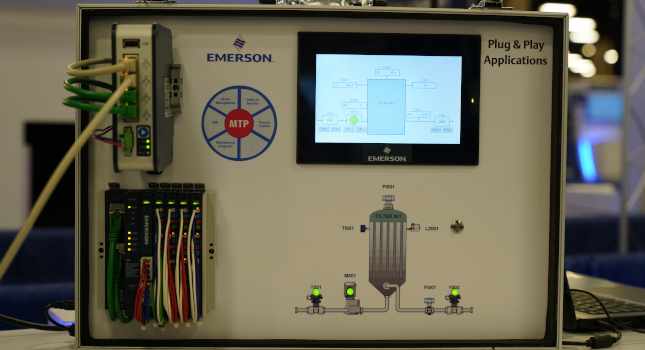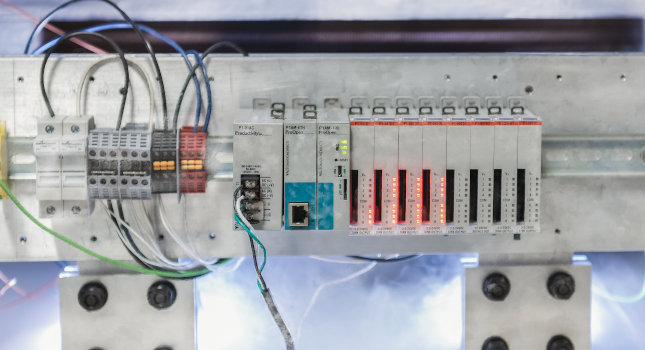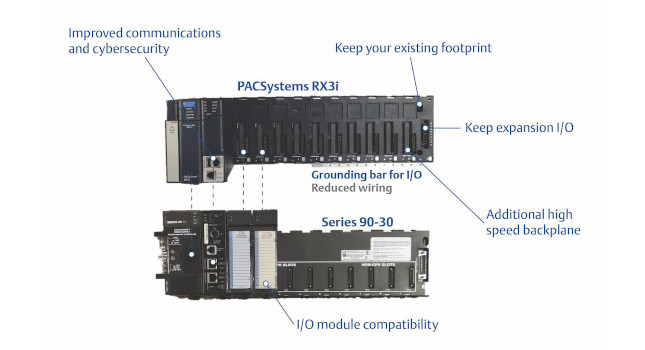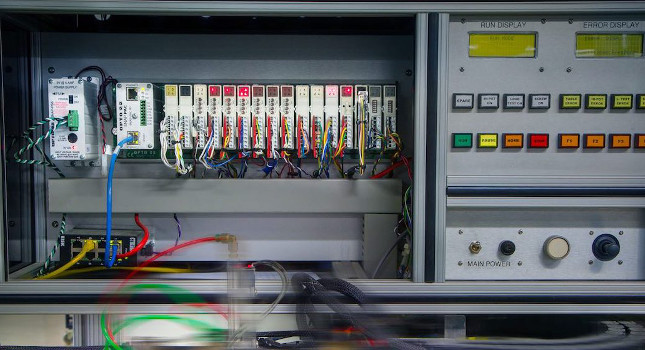The National Electrical Code definition of overcurrent includes short-circuit, ground-fault, and overload situations, with overcurrent protection typically being provided by fuses or circuit breakers known as Overcurrent Protection Devices (OCPD).
The National Electrical Code definition of overcurrent includes short-circuit, ground-fault, and overload situations, with overcurrent protection typically being provided by fuses or circuit breakers known as Overcurrent Protection Devices (OCPD). Motors are one specific application where short-circuit and ground-fault overcurrent protection is handled separately from overload protection — with different computational approaches, and using separate protection devices.
When it comes to sizing short-circuit and ground-fault overcurrent protection and overload protection for motors, motor circuits, and motor controllers, it’s important to understand the “rules of the road” spelled out in Article 430 to ensure that the correct settings are selected that provide the necessary protection, achieve high reliability, avoid nuisance trips, and the NEC is complied with. To this end, it’s critical to obtain key input data from the right sources, know how to perform the necessary calculations, and how to apply exceptions to the NEC.
While this article covers single-phase and three-phase AC induction motors in general applications, there are likely many nuances of the specific circumstances of your installation. Be sure a qualified person performs and checks your calculations to ensure compliance with the NEC. That will ensure a safe and reliable installation.
Protect your motors
Lets start out with an explanation of short-circuit and ground-fault overcurrent protection and overload protection, and their different functions.
Short-circuit and ground-fault overcurrent protection protects the motor, motor controls, and motor branch circuit conductors from overcurrent conditions due to short-circuits and ground-faults. Short-circuits are faults that occur between two conductors, between phases, or between a phase and neutral.
Ground-faults are faults between a phase and ground. Overcurrent protection devices must be capable of carrying the full load current of the motor as well as the starting current, or inrush current (also referred to as locked rotor current or LRC), of the motor, without tripping.
OCPD’s are typically non-time delay fuses, time-delay fuses, instantaneous trip breakers, or inverse time breakers. Short-circuit and ground-fault overcurrent protection protects conductors, motors, and equipment from high levels of short-circuit currents that can cause damage, destruction, burn downs, and fires.
Overload protection devices protect motors, motor controllers, and motor branch circuit conductors against excessive heating due to motor overloads, failure to start, stalled motors, single phasing, low supply voltage, etc.
Motor overload occurs when equipment is operated in excess of normal, nameplate full load amps. If it continues for a long enough period of time, this will cause damage or overheating of the motor equipment, motor controller, or motor branch circuit conductors. Fire hazard is possible from overload conditions.
Proper sizing process
Let’s start first with a brief summary of the process for sizing short-circuit and ground-fault overcurrent protection for motors:
Determine motor FLC using NEC Table 430.248 or 430.250
Determine maximum rating or setting of the OCPD using NEC Table 430.52, and apply applicable exceptions
Determine motor starting amps or locked rotor current (LRC)
Ensure that OCPD rating or setting is capable of carrying the motor starting current (LRC)
Determine if a lower size fuse or breaker is appropriate that could hold FLC and LRC.
NEC Article 430.6(A)(1) requires the use of full load current (FLC) values from Tables 430.248 and 430.250 when determining the maximum rating or setting of the OCPD. You find these values in the Tables by using the motor HP and nominal voltage stamped on the motor nameplate. You are not permitted to use full load amps (FLA) that are also on the nameplate for sizing motor overcurrent protection.
If the exact motor HP is not listed on the Table, then use interpolation or proportion to determine FLC from Tables. In the case of appliances (as defined in the NEC), when both HP and FLC are stamped on the nameplate, use nameplate FLC. The next step is to determine the maximum rating or setting of the OCPD being utilized by multiplying the FLC value from the Table by the appropriate multiplier from Table 430.52. Note that Exception 1 allows you to “size up” to the next higher standard ampere rating fuse or breaker, according to the standard ampere ratings listed in Article 240.6.
For maximum protection, the selected rating or setting should be the value that is as low as possible and still allows for proper motor starting (LRC) and running (FLC) without nuisance trips. To allow motors to start, non-time-delay fuses hold 5 times rating for up to 2 seconds, time-delay fuses hold 5 times rating for up to 10 seconds, instantaneous trip circuit breakers hold 3 times, 5 times, 7 times, or 10 times their rating depending on setting, and inverse-time circuit breakers hold 3 times their rating for period of time depending on setting.
The next step is to determine motor starting amps (LRC), to ensure that the OCPD will hold starting amps. To do this, a calculation needs to be performed using data from Table 430.7(B) to compute the LRC based on the motor’s Code Letter stamped on the motor nameplate.
This Locked-Rotor Indicating Code Letter indicates the value of locked-rotor KVA per Horsepower for that specific design of squirrel-cage rotor bar design. This is not to be confused with the nameplate data for the motor NEMA Design letter. Since the KVA per HP data in this table is listed in the form of a range, you should use the largest value in the range in your calculation, to compute maximum LRC for your specific motor.
Verify that the computed LRC is less than the amount of current that the OCPD will hold for the short period of time. This will ensure that the motor will start and the inrush starting current will not trip the OCPD.
What happens if the motor starting current trips the fuse or breaker when the maximum size OCPD is utilized? In this case, Table 430.52 Exception 2 allows you to use a higher multiplier for sizing the OCPD, however you are not permitted to “size up”, you must “size down” to the next lower standard size ampere rating listed in Article 240.6. Please refer to the sidebar for an example of these calculations.
Sizing motor overload protection
Now lets move on to sizing overload protection that, as noted earlier, provides “thermal” protection for motors. Motor overload units, commonly called “heaters”, are one of the following types of devices:
melting alloy type (most common);
bimetallic type;
solid state type; or
dashpot type (magnetic)
Motors rated more than 1 HP and used in continuous duty applications, and motors rated 1 HP or less and started automatically, must be protected against overload conditions. A calculation is performed to determine the maximum rating of the overload device. NEC Article 430.6(A)(2) requires that the motor full load amp (FLA) data be obtained from the motor nameplate, not from the NEC Tables as is done for sizing short-circuit and ground-fault overcurrent protection.
A separate overload device is sized at 125% of motor nameplate FLA for motors with nameplate service factor (SF) of 1.15 or greater and for motors with nameplate temperature rise of 40 degrees C or less.
The overload device is sized at 115% of motor nameplate FLA for all other motors. These percentages are referred to as the “unmodified” overload. If overload units sized as just described are not sufficient to start the motor or carry the load, NEC Article 430.32(C) allows the overload device setting for motors with a SF of 1.15 or greater and motors with a temperature rise of 40 degrees C or less to be incrementally modified to as much as 140% of motor nameplate FLA, and incrementally modified to as much as 130% for all other motors.
Motor overload protection is not required where it might introduce additional or increased hazards such as in fire pump applications. The number of overload devices must comply with NEC Table 430.37, generally one overload device installed on each ungrounded conductor.
As with any electrical design or installation, ensure compliance with the National Electrical Code by a qualified person. All motor installations do not always fit the more common rules of the road, so your specific circumstances should be understood and checked to provide a safe and reliable operation.
The process of properly sizing short-circuit and ground-fault covercurrent protection requires attention to detail — and to the new NEC tables on the subject.
While there are specific rules of the road for motor protection, each application is different.
A qualified NEC expert is the best person to make sure your motor protection is up to code.
Relevant NEC Tables and Articles:
Article 430 contains a number of Tables and points to other Articles that are important to obtain the key data for performing the necessary calculations. Following is a listing of these Tables and Articles. Pay close attention to all Table notes, exceptions, titles, application comments, column headings, and units of measure):
Table 430.248: FLC of single-phase AC motors.
Table 430.250: FLC of three-phase AC motors.
Table 430.52: multipliers used to compute the maximum rating or setting for motor short-circuit and ground-fault protection devices (OCPD’s).
Article 240.6: Standard Ampere Ratings of fuses and fixed-trip circuit breakers.
Table 430.7(B): locked rotor KVA per HP values for specific induction motor Code Letters.
Article 430.32: multipliers used to compute the maximum overload device size.
Table 430.37: number and location of required overload units.



